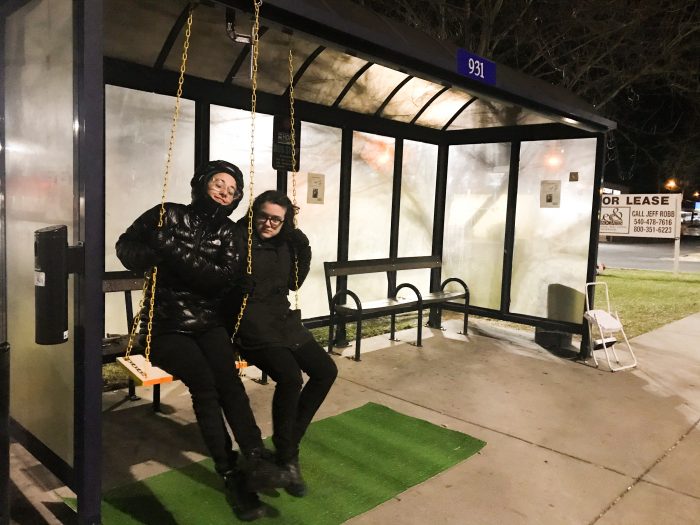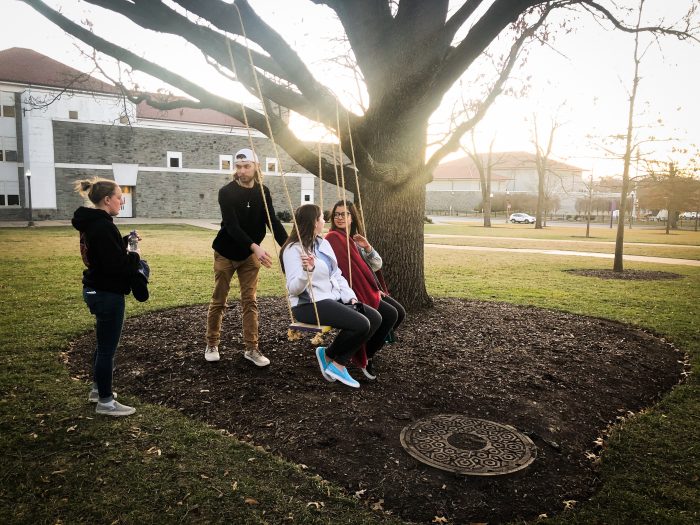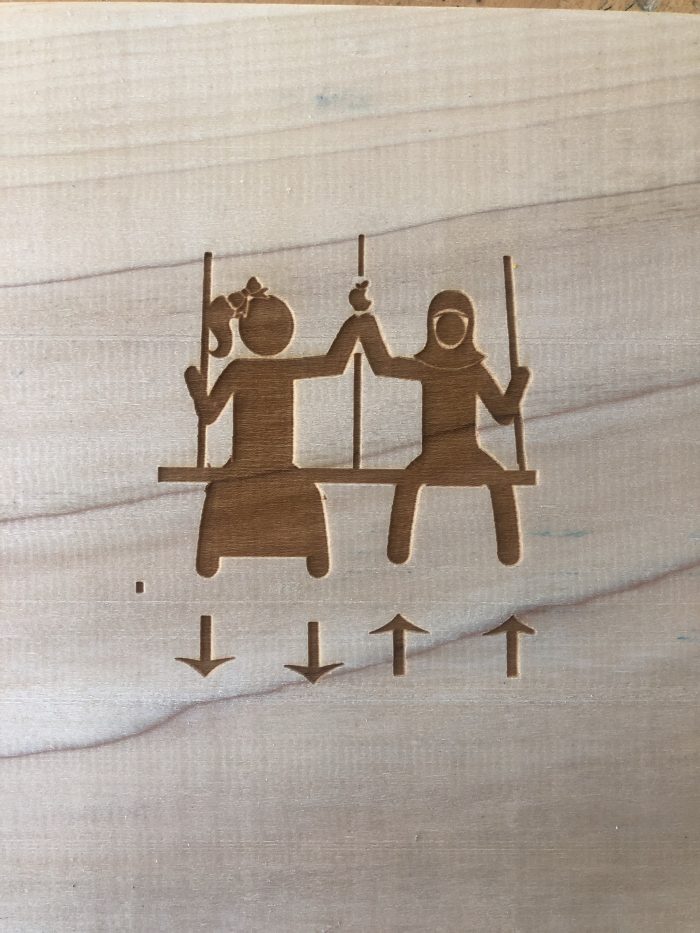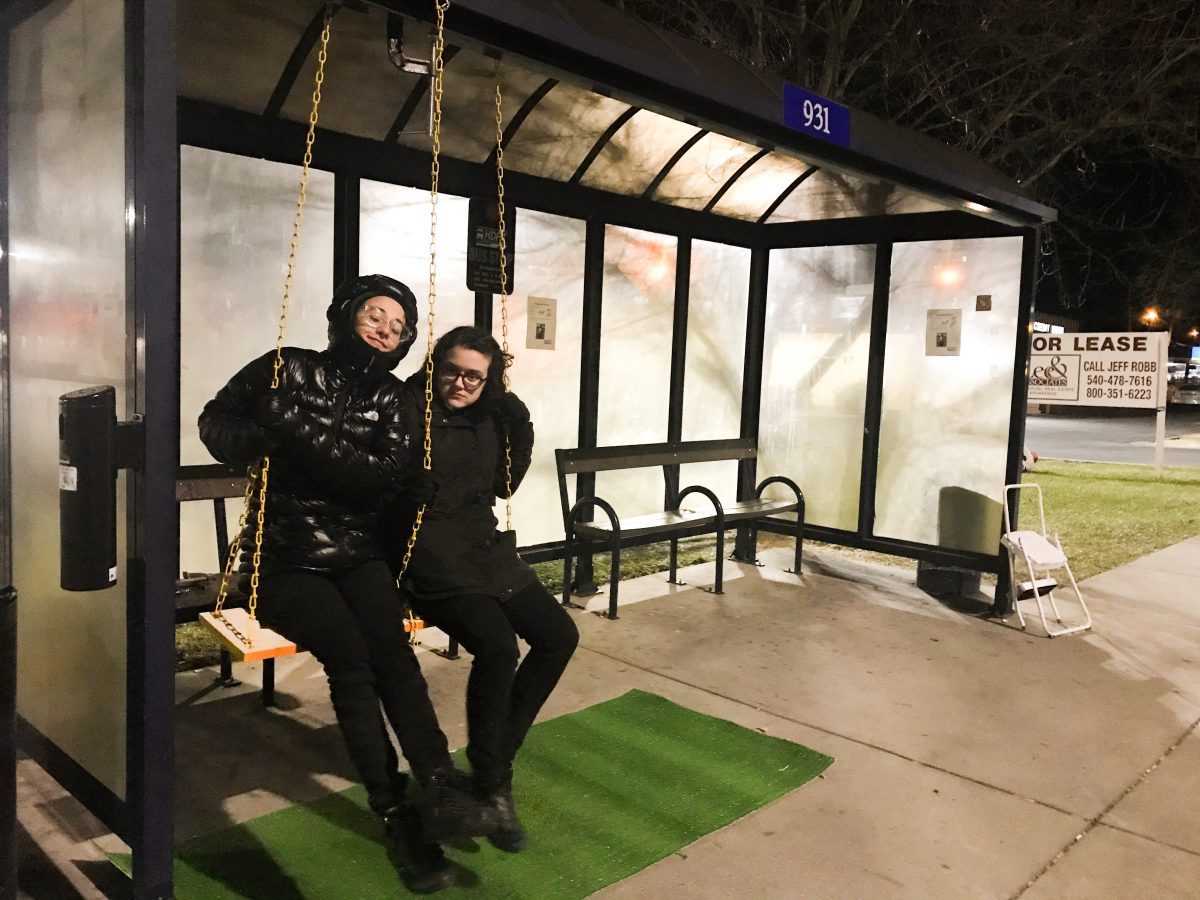Peace through Collective Play
Highlighting the Gestural in Undermining Social Striation in the American South

Fig. G: Swing installation in bus shelter 931 on Wolfe Street in Harrisonburg, Virginia.
As a second iteration, the swings were approached as a temporary performance, installed while people used bus stops at identified social border sites, used by artists with invited participation from those occupying the space, and removed at the conclusion of the performative interaction. While only a few individuals were willing to engage openly with the object, intersective conversations about play space resulted from the installations, which came as a result of the initial use of the object-as-performance. The use of the swings by performers with the goal of engaging greatly increased, likely due to rising trust of the structure and the goals of the installation (Fig. C).
Implications, Concluding Remarks, and Plans for Project Continuation
While the work is still in progress, it has been put on hold as a result of COVID-19 and social distancing. I plan to continue to evolve the work in both performative and object-structural ways. As I continue to work with the play objects as public installations, I plan to continue to identify spaces and intersections within the community, using strategic factors such as transportation access and type, need-meeting, and utilization of public and semi-public spaces.
Since the early stages of the project, I have also partnered with an artist in Richmond, Virginia, and have done early prototype installations of swings in Mosby Court, a Richmond neighborhood that has experienced a significant increase in gun violence and person-to-person violence in the last year, to perform a comparative study in an urban environment with a known history of violence. It is our hope that, once cities reopen, and it is safe to do so, we can continue the work in Mosby Court, practicing a transfer of agency to residents by setting up a space for locals to work on making the swings with us and hanging them for themselves. This, we hope, will increase engagement by giving agency to those declaring the shared status of the spaces by hanging the swings and encouraging mutual participation with the art objects made by those who hope to use them.


Sarah Phillips ( 2020): Peace through Collective Play. Highlighting the Gestural in Undermining Social Striation in the American South. In: p/art/icipate – Kultur aktiv gestalten # 11 , https://www.p-art-icipate.net/peace-through-collective-play/



 Artikel drucken
Artikel drucken